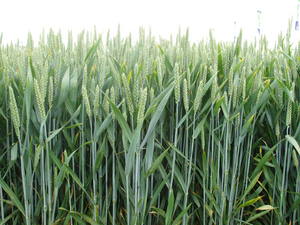I wrote a blog in April (Precision application of nitrogen) on why I thought that experiments and field experience over the past 10-20 years have not shown a significant benefit in the spatial application of nitrogen in winter wheat. The recent publication of the AHDB project ‘Automating nitrogen fertiliser for cereals (Auto-N)’ has strengthened the argument that this approach to nitrogen fertilisation has little or no economic advantage.
The authors of the report seem to accept that the simplistic models that are currently used to predict nitrogen requirement do not take into account the unpredictability of nitrogen uptake by the crop, in this case winter wheat. In many cases there are interactions between the components used to predict optimum nitrogen requirement. For instance the authors highlight a possible negative correlation between soil nitrogen supply (SNS) and fertiliser recovery. Where SNS is high there is sometimes a lower recovery of fertiliser nitrogen by the crop.
However, despite the failure to define an approach that will make the spatial application of nitrogen pay in winter wheat, the report is full of data. I love data, but there is far too much for me to absorb. There are, though, some standout pieces of information and interpretation by the authors.
Highlighted in the project summary is the statement that high SNS is associated with high yields. We are familiar with the term SNS; in current recommendation systems it is the sum of Soil Mineral Nitrogen (SMN) in the spring,plus the amount of nitrogen in the crop at that time, plus an estimate of usable net mineralisable nitrogen released by the soil. However, in the report it has a different meaning: it is the amount of nitrogen in the crop at harvest in the plots that did not receive nitrogen, hence it is Harvested SNS. The interesting observation that high Harvested SNS is associated with high yields is only useful if it is predictable. Unfortunately it may not be; in this project the relationship between SMN and Harvested SNS was tenuous.
Other data collected in this project suggest that there is not a strong association between grain yield and nitrogen requirement. This confirms previous field and experimental evidence that very high yields can be achieved with moderate levels of nitrogen. In this project, plot yields in excess of 13 t/ha were achieved with 240 kg N/ha in a field which had modest levels of SMN. Last year, in a NIAB TAG experiment in a field with typical levels of SMN, treatment yields in excess of 14 t/ha were achieved with 220 kg N/ha before additional nitrogen was required to enable even higher yields. However, please remember that spot yields in excess of 14 t/ha can occur in fields averaging 10-12 t/ha.
To quote the report ‘the lack of a strong relationship between yield and nitrogen requirement raises some important questions’. The most important question is how yield expectation can be incorporated into future nitrogen recommendation systems. My view for feed wheats is that nitrogen doses should not be increased until field yields above 10-12 t/ha are expected. For field yields above this level any increase in nitrogen recommendation should be modest.
Any new recommendation system cannot continue to adopt the principle that each kg of SMN is equivalent to a kg of SNS. Continued adherence to this principle explains why RB 209 has too large a change between soil nitrogen indices in recommended doses for feed wheat.
AHDB has funded two large projects that patently show that each kg of SMN changes SNS by only up to half a kg. Reviews of field experiments and the Auto N project also indicate the surprising lack of influence of SMN levels below about 100 kg/ha on the economic optimum dose of nitrogen for feed wheat.
All this is perhaps summed up by this statement in the report: ‘However, the large and somewhat unexplained variation in measured N requirements means that any prediction system will inevitably produce errors and improvement over the standard recommendation system (or even a standard figure of, say, 200 kg N/ha) is likely to be relatively modest’. I think that the 200 kg N/ha quoted was in the context that a kg of nitrogen was five times more expensive that a kg of wheat.
I suppose that the only comfort is that errors of up to 50 kg N/ha either side of the optimum dose has a relatively small effect on the margin over nitrogen costs. Please remember that the doses of nitrogen quoted in this report are relevant to feed wheats rather than milling wheats.

